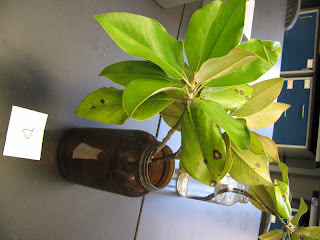Boltaceae characters:
1.
Thread: absent (0), present (1)
2.
Point: present (0), absent (1)
3.
Top shape: flat (0), rounded (1)
4.
Length: long (>3cm), short (1)
5.
Screwdriver interface: none (0), Phillips (1),
flat (2)
6.
Color: silver (0), blackish, (1), bluish (2)
Map these characters, using the characters states provided, to understand the evolution of these characters. Where are the synapomorphies? Are any characters homoplasious?
Classifying is both a subjective and objective process. Remember that named groups must be monophyletic. Make a classification scheme for the members of the Boltaceae above. Then make a key to provide a practical way by which the taxa you defined may be easily identified.
Now, use the skills you learned in making a key of Boltaceae to identify the plants in lab:
Match the letter to each plant
species next to the jar in the following list, using the key below:
Key:
1. Leaves compound or highly
dissected
2.
Veins parallel
3.
Leaves more than 2m long…Sabal palmetto
3.
Leaves less than 1m long…Zamia furfuracea
2.
Veins reticulate…Grevillea robusta
1. Leaves simple
4.
Leaves opposite
5.
Leaves less than 1cm wide…Olea europaea
5.
Leaves more than 2cm wide…Ligustrum
japonicum
4.
Leaves alternate
6.
Leaves broad and flat…Magnolia
grandiflora
6.
Leaves linear and roundish in cross section
7.
Leaves clustered into fascicles, not covered in scales…Pinus palustris
7.
Leaves not clustered into fascicles, covered in scales
8.
Plants long and dangling with relatively narrow leaves…Tillandsia usneoides
8.
Plants short and clumping with relatively large leaves… Tillandsia recurvata










No comments:
Post a Comment